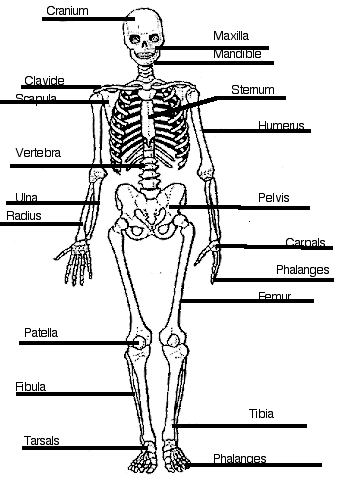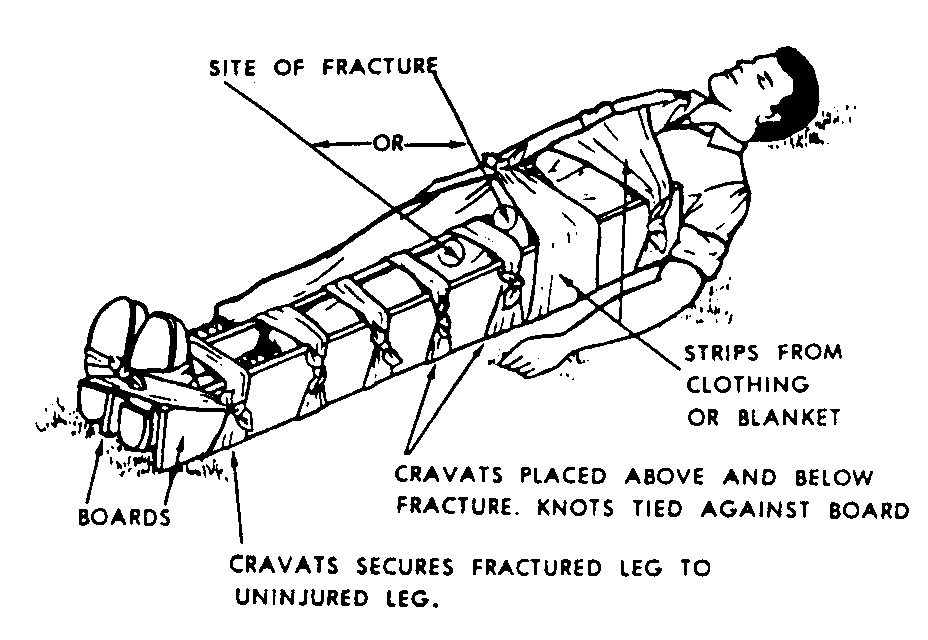Leg or Ankle
If the fracture is open, dress the wound before splinting. When it is necessary to remove a shoe or boot because of pain from swelling of the ankle or for any other reason, the removal must be carefully done by unlacing or cutting the boot to prevent damage to the ankle. In the absence of severe swelling or bleeding it may be wise to leave the boot on for additional support.
The splint for a fracture of the leg or ankle should reach from against the buttocks to beyond the heel. Place a well-padded splint under the victim while the leg is supported on both sides of the fracture. Tie the bandages on the outer side, near the splint as follows:
- Pass the end of the first bandage around the inner side of the thigh at the groin, pass it over the thigh and under the splint, and tie.
- Pass two bandages around the thigh and splint, one at the middle of the thigh and the other just about the knee and tie.
- Place additional padding around the knee and ankle.
- Place a padded splint on the outer side of the leg.
- Pass a fourth bandage around the leg, the padding, and the splint just below the knee and tie; pass a fifth bandage just above or below the fracture and tie. Do not tie over fracture.
- Pass the center of a sixth bandage around the instep and bring the ends up each side of the ankle.
- Cross the ends on top and pass them around the ankle and splint.
- Cross the ends under the splint, return to the top of the ankle, cross and carry down each side of the ankle and tie under the instep.
Top
For more detail relating to the healing of humans, here is a neat site that might help you. The golden fire lizard will show you the way!

Sources for these pages were:
Radcliffe, J. The New International Webster's Pocket Medical & First Aid Dictionary of the English Language. USA: Trident Press International, 1997.
Yahoo! Yahoo! Health Encyclopedia. June 2004. |
All references to worlds and characters based on Anne McCaffrey's fiction are copyright ©
Anne McCaffrey 1967, 2001, all rights reserved, and used by permission of the author.
Special thanks to Nerissa and Avonelle, who helped in the compilation of this resource.


